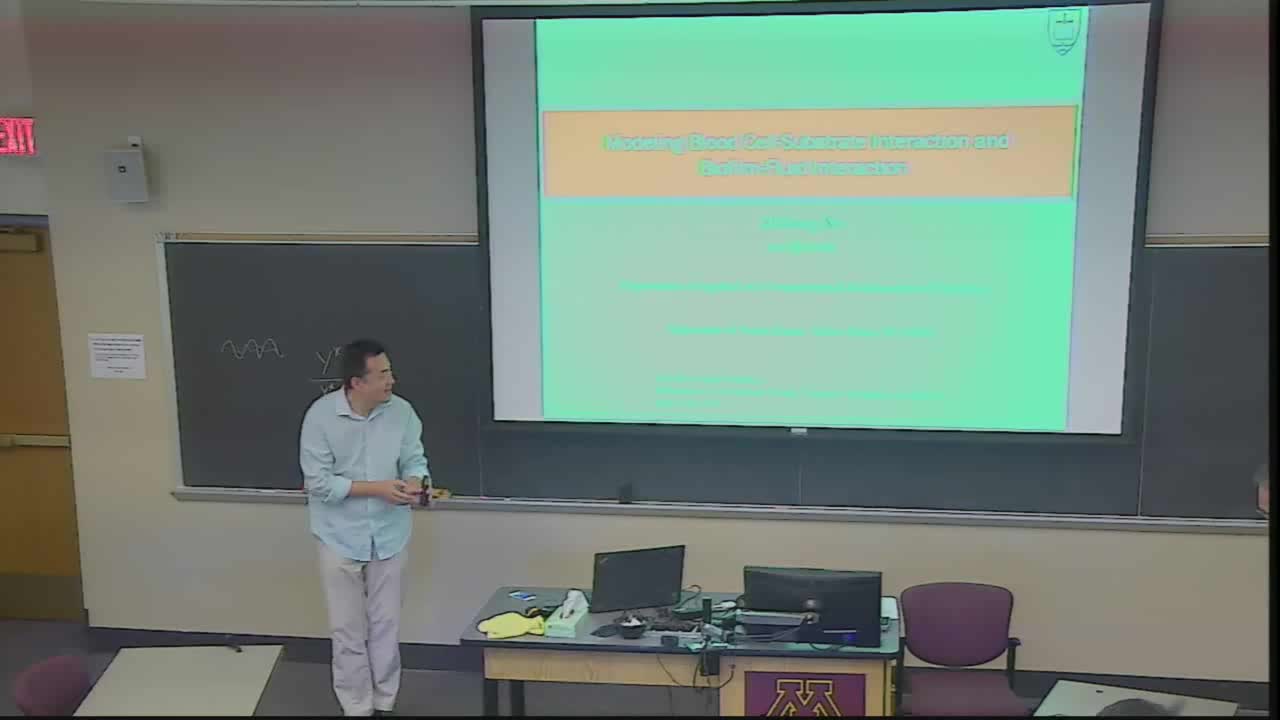Modeling Blood Cell-Substrate Interaction and Biofilm-Fluid Interaction
Presenter
July 24, 2015
Keywords:
- Computatinal method
MSC:
- 92-08
Abstract
Two different models will be presented in this talk. The first model is for studying platelet-plasma- vessel wall interaction. Platelets aggregation at the injury site of the blood vessel occurring via platelet-platelet adhesion, tethering and rolling on the injured endothelium is a critical initial step in blood clot formation. To understand this critical step, a computational model taking into account mechanical properties of membranes of biological cells is developed and is coupled with the flow by the distributed-Lagrange-multiplier/fictitious-domain (DLM/FD) formulation. For modeling cell-substrate adhesion, a stochastic receptor-ligand binding submodel is used. Simulations show how elasticity of cells affect the platelet-substrate adhesion process. In the second part of the talk, a biofilm model which systemically couples bacterial, extracellular polymeric substances (EPS) and solvent phases in biofilm will be presented. The model is derived by using energetic variational approach and phase-field method coupling different phases together. An unconditionally energy-stable numerical splitting scheme is developed for computing numerical solution of the model efficiently. Model simulations are used to understand roles of elasticity and viscosity of the EPS on structural stability of the biofilm under flow condition.
